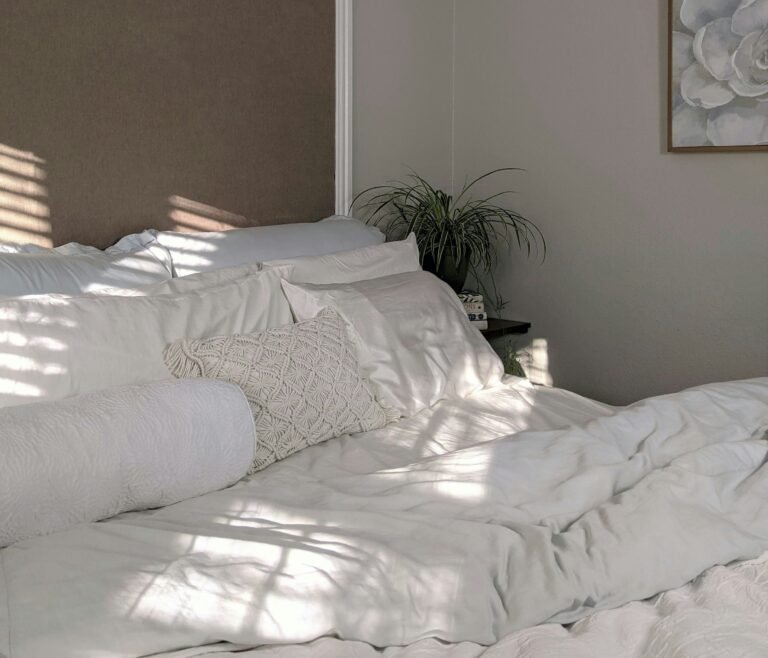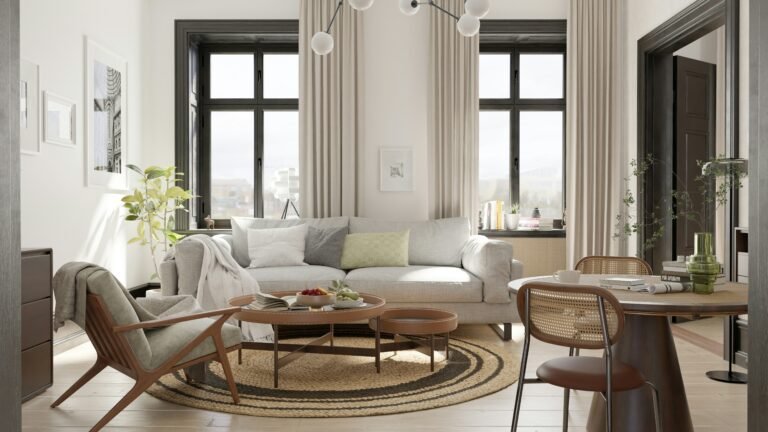You don’t need to live in a Georgian townhouse to fall in love with British furniture. Maybe you’ve spotted a deep-buttoned Chesterfield in a boutique hotel or eyed a roll-top desk in an antiques shop and thought, “That would look incredible in my home.” You’re not alone.
British furniture has a way of quietly commanding attention. It’s not loud or trendy. It doesn’t beg for the spotlight. But it tells a story—of craftsmanship, heritage, and design that’s built to last.
And maybe that’s what you’re after. You want more than flat-pack trends and short-term fixes. You want pieces that mean something. You want to know why they matter—and how to make them work in a modern space without feeling like you’ve stepped into a period drama.
You’re in the right place. This guide walks you through some of the most iconic British furniture pieces—from the beloved Chesterfield sofa to the timeless roll-top desk. You’ll learn where they come from, what makes them special, and how to bring them into your home in a way that feels effortless, elegant and very much now.
What Makes Furniture ‘Iconic’ in Britain?
Not every antique or vintage piece earns the label iconic. When we talk about iconic British furniture, we’re talking about pieces that have stood the test of time—not just in how long they’ve been around, but in how often they’ve been reimagined, reused, and loved across generations.
Here’s what usually makes a piece iconic:
- Craftsmanship – British furniture has long been associated with meticulous joinery, rich materials like oak, walnut and mahogany, and a reverence for quality over convenience.
- Cultural Influence – Many pieces rose to fame because of where they appeared: the stately homes of the aristocracy, officers’ quarters in the Empire, or the members’ lounges of London’s oldest clubs.
- Enduring Design – The best British pieces balance form and function. They’re beautiful, but they’re also useful. They evolve without losing their essence—just think of the Chesterfield, which looks as at home in a Soho flat as it does in a country estate.
- Recognisability – You know it when you see it. Whether it’s the deep button tufting of a sofa or the graceful curve of a Windsor chair, iconic pieces carry distinct visual hallmarks.
These aren’t just furniture items—they’re conversation starters, legacy pieces, and subtle statements of style.
The Chesterfield Sofa
Few pieces say “British” quite like the Chesterfield. With its deep button tufting, rolled arms, and low back, it’s instantly recognisable—and unmistakably elegant.
A Bit of History
The Chesterfield dates back to the 18th century, rumoured to have been commissioned by the 4th Earl of Chesterfield. It was designed so a gentleman could sit upright without wrinkling his suit. Over time, it moved from members’ clubs and drawing rooms into everything from hotel lobbies to modern flats.
Why It’s Iconic
- Signature Look: Tufted leather, nailhead trim, and symmetrical proportions.
- Material Matters: Originally crafted in rich, dark leathers—though today, you’ll see velvets and lighter fabrics in contemporary takes.
- Longevity: This is not a throwaway piece. A well-made Chesterfield lasts decades and only gets better with age.
How to Style It
- In a modern flat, go bold with jewel-toned velvet and pair it with sleek side tables.
- In a traditional home, stick with classic brown leather and layer with wool or tweed throws.
- For a cosy reading nook, one Chesterfield and a floor lamp is all you need.
It’s a piece that adapts. Whether you’re going for vintage charm or moody minimalism, the Chesterfield delivers both substance and style.
The Roll-Top Desk
If the Chesterfield is about comfort and luxury, the roll-top desk is about order, purpose, and understated style. It’s the kind of piece that makes you want to sit down, open a fountain pen, and write something meaningful.
A Bit of History
The roll-top desk became popular in Victorian Britain, prized for its clever storage and practical design. Its key feature—a tambour, or slatted rolling cover—lets you slide the desk shut without disturbing your work. Originally used by clerks and administrators, it quickly found its way into homes as a sign of education and refinement.
Why It’s Iconic
- Functional Design: Multiple cubbies, drawers, and compartments—ideal for organising letters, documents, or stationery.
- Privacy with Style: The rolling cover was more than a gimmick; it kept paperwork private in an age before password protection.
- Crafted to Last: Most were built from solid oak, walnut or mahogany—made to withstand daily use.
How to Style It
- In a modern home office, pair a vintage roll-top with a contemporary chair and keep the desktop minimal.
- In a bedroom or hallway, use it as a decorative console—open just enough to show off its compartments.
- For a heritage look, lean into its antique character with brass accessories and warm-toned woods.
The roll-top desk blends function with flair. It’s one of those rare pieces that’s both hardworking and quietly handsome.
The Windsor Chair
At first glance, the Windsor chair looks simple—maybe even modest. But don’t let that fool you. With its turned legs, spindle back, and sculpted seat, it’s one of the most enduring designs in British furniture history.
A Bit of History
The Windsor chair emerged in the early 18th century, likely in the Thames Valley region. It was designed for function: lightweight, comfortable, and easy to move around. Over time, it became a staple in country homes, cottages, and eventually modern dining rooms.
Why It’s Iconic
- Timeless Silhouette: The curved back and splayed legs give it both comfort and visual balance.
- Built for Use: No-frills design made it ideal for daily life—from kitchen meals to reading by the fire.
- Versatility: Found in everything from traditional dining rooms to minimalist lofts.
How to Style It
- In a modern kitchen, use black-painted Windsors around a rustic wood table for contrast.
- For a Scandi-British crossover, pair natural oak chairs with pale walls and soft textiles.
- In a bedroom or hallway, a single Windsor makes a perfect accent chair or clothes stand.
The Windsor chair proves that good design doesn’t shout—it just works. It’s unfussy, functional, and always in fashion.
The Campaign Chest
The campaign chest tells a story of travel, strategy, and military precision. Originally designed for British officers during colonial campaigns, it had to be rugged enough for the battlefield but refined enough to reflect a gentleman’s status.
A Bit of History
Popularised in the 19th century, the campaign chest was built in stackable sections for easy transport and often featured brass hardware, flush handles, and protective corner brackets. It allowed officers to maintain a sense of home—and order—even while stationed abroad.
Why It’s Iconic
- Form Meets Function: Built for durability and easy transport, with a timeless boxy shape.
- Signature Details: Brass hardware, clean lines, recessed handles.
- Colonial Heritage: Embodies British design influence abroad, making it a collector’s favourite.
How to Style It
- In a modern bedroom, use it as a chest of drawers or even a statement bedside table.
- For an industrial or eclectic look, mix it with iron-framed beds, leather accents, and neutral linens.
- In a living room, it works well as a sideboard or drinks cabinet—especially when styled with books and vintage accessories.
The campaign chest is a conversation starter. It’s both functional and rich with historical character, bringing a quiet sense of adventure into any room.
The Four-Poster Bed
The four-poster bed is the ultimate statement of grandeur. Towering, dramatic, and deeply tied to British aristocratic life, it’s a piece that instantly transforms a bedroom—from ordinary to opulent.
A Bit of History
These beds date back to the Tudor period and were originally designed not just for sleeping, but for privacy and warmth. Thick curtains could be drawn around the bed to keep out drafts and eavesdroppers alike. Over centuries, the design became more decorative, often featuring elaborate carving and fine upholstery.
Why It’s Iconic
- Instant Drama: The tall posts create height and structure—great for rooms with high ceilings.
- Historic Elegance: Associated with royalty, nobility, and old English manor houses.
- Cosy and Grand: Offers both an intimate cocoon and a strong visual centrepiece.
How to Style It
- In a contemporary space, go minimal—natural wood posts, no canopy, crisp white bedding.
- For a classic British look, embrace carved posts, rich fabrics, and layered textures like velvet and linen.
- In a country-style home, try a painted four-poster with floral bedding for a softer, romantic feel.
The four-poster bed adds a touch of theatre to the everyday. Even a simplified version brings a sense of tradition and luxury that’s hard to beat.
Incorporating These Pieces into Modern Homes
You don’t need a stately home—or a time machine—to make iconic British furniture work in your space. In fact, one of the best things about these pieces is how easily they blend with modern interiors when styled thoughtfully.
Here’s how to bring them in without making your home feel like a museum:
Balance Old with New
- Pair a vintage Chesterfield with a sleek coffee table or abstract art.
- Match a Windsor chair with a clean, Scandinavian-style dining table.
- Place a roll-top desk in a minimalist room to let its detail shine.
Keep It Light
- Don’t overload the room with heavy pieces. One statement item per space is often enough.
- Use neutral or muted wall colours to let the furniture speak for itself.
Play with Contrast
- A leather campaign chest pops in a room with soft textiles and warm lighting.
- A four-poster bed becomes modern when surrounded by simple, geometric decor.
Mix Materials
- Combine wood and metal, old and new finishes. These pieces were built to last—let them stand alongside newer designs that complement rather than compete.
Don’t Be Precious
- Use the furniture. Sit on it, store things in it, let it get a bit of wear. These pieces were made for real life—not just showrooms.
British heritage furniture doesn’t have to be intimidating. When styled with care, it can add depth, character and a sense of permanence to even the most modern home.
What to Watch For: Spotting Quality and Authenticity
If you’re investing in iconic British furniture—especially antiques—it pays to know what to look for. Not all Chesterfields are created equal, and that campaign chest at the flea market might be a reproduction. Here’s how to tell the difference between a genuine classic and a clever knock-off.
1. Materials Matter
- Look for solid wood, not veneers or particleboard. Older pieces will often be made from oak, mahogany, walnut, or elm.
- Genuine leather on a Chesterfield will feel supple and show natural imperfections—not shiny and uniform like faux versions.
2. Construction Techniques
- Dovetail joints in drawers are a good sign of quality craftsmanship.
- Hand-planed surfaces and irregularities in the finish often point to age and authenticity.
- Check for solid brass or iron hardware—cheap metal screws and hinges are red flags.
3. Signs of Age (The Good Kind)
- Patina is your friend: look for wear that feels natural—scuffed feet, slight discolouration, aged metal.
- Beware of anything claiming to be “antique” but looks brand new. Reproductions often try too hard to mimic age.
4. Provenance and Labels
- Some pieces may have maker’s marks, serial numbers or branded labels. Research these if you can.
- Ask the seller for the item’s history if buying vintage or antique. A reputable dealer should be happy to share what they know.
5. Trust Your Gut (and Your Back)
- Heft is a clue—older pieces were built solid. If it feels suspiciously light or flimsy, it probably is.
- And always test drawers, seats, or hinges to see how they function. Quality pieces feel sturdy and dependable, even decades later.
When in doubt, don’t rush. A little patience—and some informed shopping—goes a long way toward finding furniture that’s not just beautiful, but built to last.
Conclusion: British Furniture Isn’t Just History—It’s Future-Proof
Iconic British furniture isn’t about nostalgia for the sake of it. It’s about investing in pieces that carry meaning, craftsmanship, and character—furniture that earns its place in your home not just because it looks good, but because it feels right.
Whether it’s the quiet confidence of a Windsor chair or the statement-making silhouette of a four-poster bed, these designs were built with care and intention. That’s why they’ve lasted centuries. And that’s why they’ll keep working for you—whether you live in a London flat, a countryside cottage, or a minimalist new build.
You don’t need to go full heritage to appreciate the value these pieces bring. A single well-chosen item can anchor a space, start conversations, and subtly raise the tone of the room around it.
So take your time. Explore. Find the piece that speaks to you—and let it become part of your story.
Alex is the creator of Homely Haven, a space dedicated to simple, stylish ideas for interiors and gardens alike. With a passion for cozy living rooms, inviting outdoor spaces, and practical DIY solutions, Alex shares tips and guides that help turn any house into a true home.
From budget-friendly decorating hacks to weekend garden projects, the goal is always the same: to inspire you to create spaces that feel personal, beautiful, and welcoming. When not writing, Alex is usually rearranging furniture, sketching new garden layouts, or exploring design trends for the next project.








